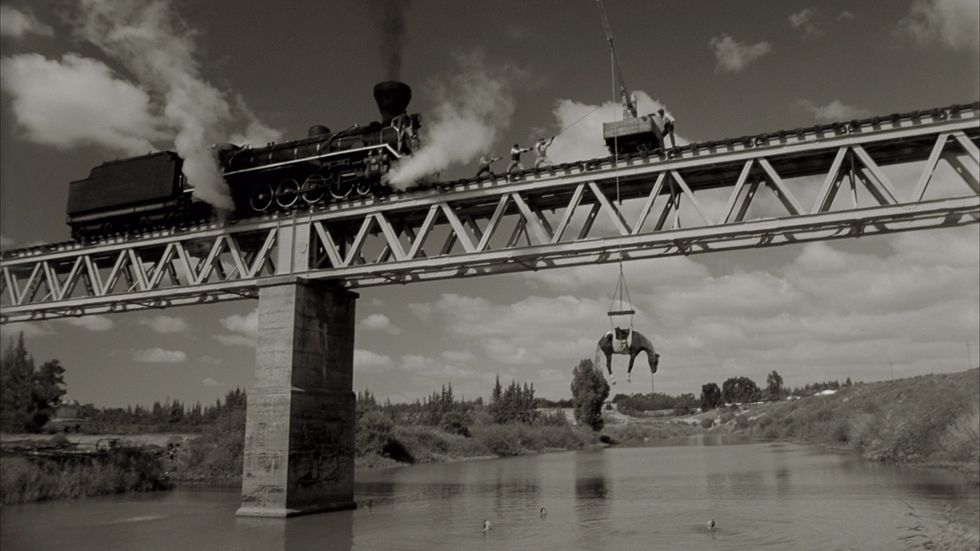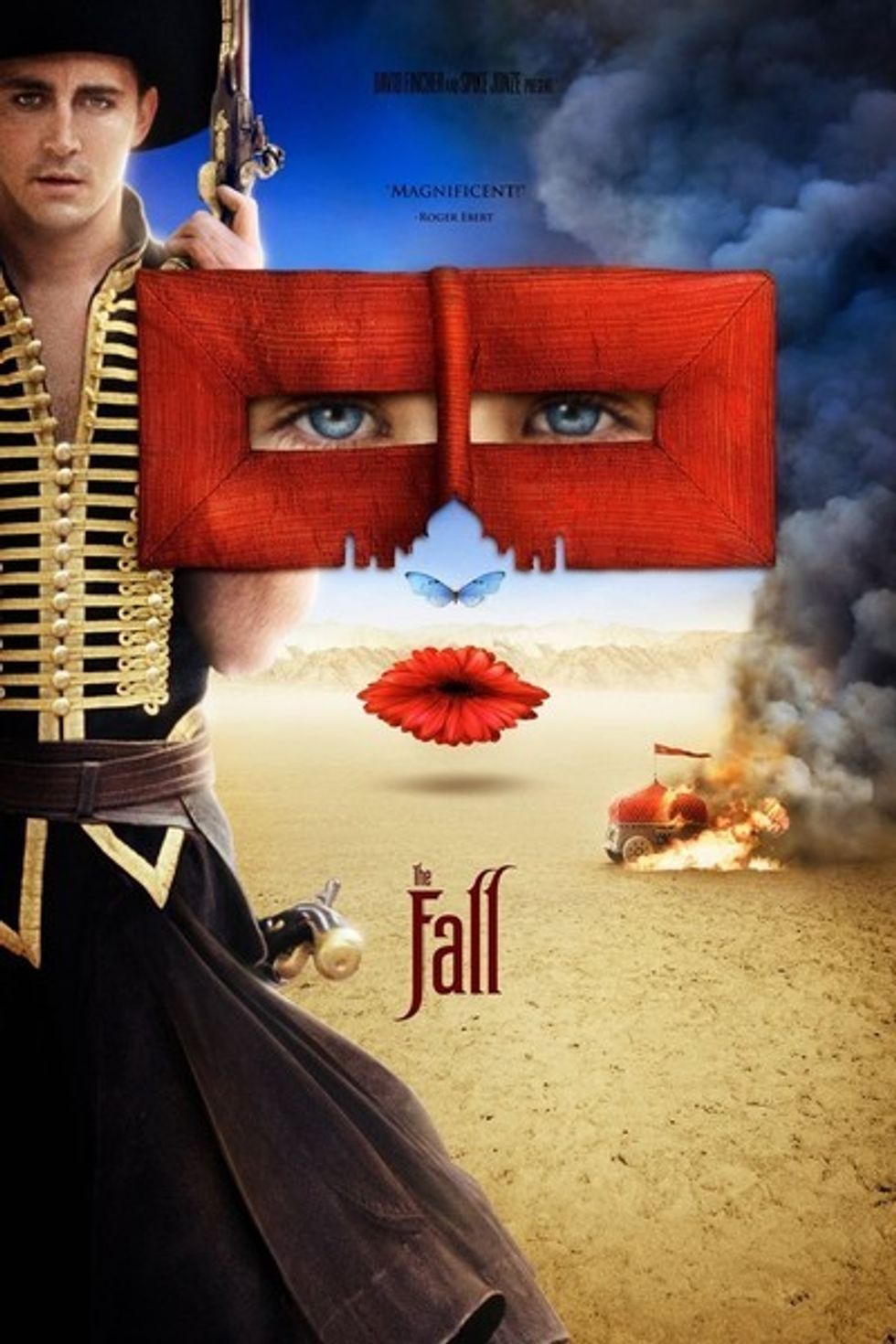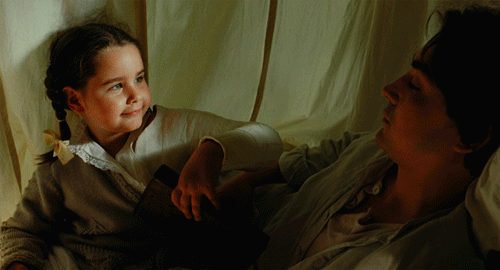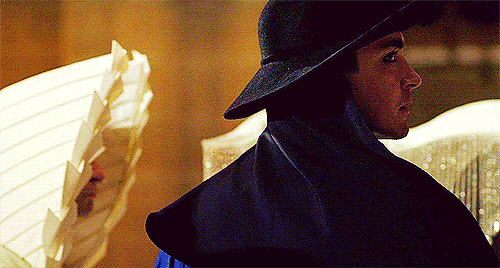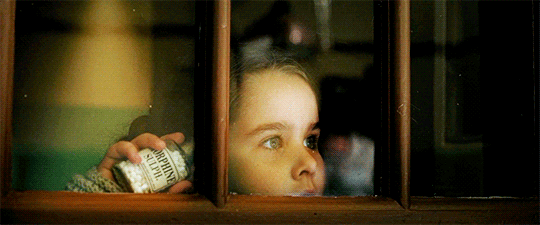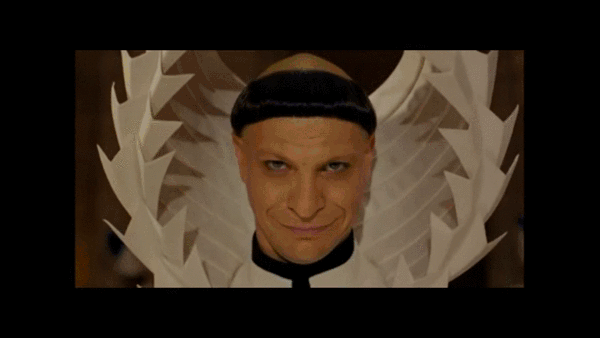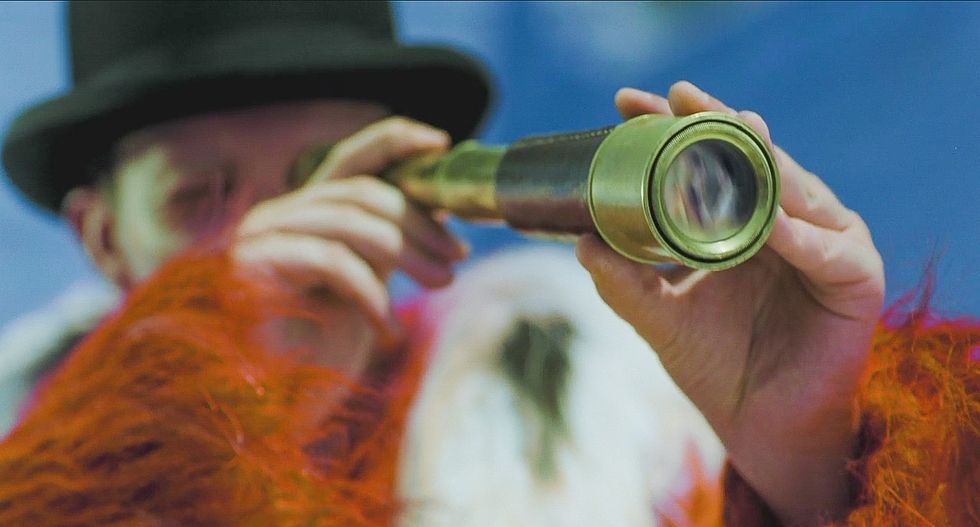What are the first things that pop into your head when asked about what makes a good movie? Is it the acting? The cinematography? The special effects? The colors? The story? Well, you're in luck. I have a film that has all of it (except for maybe good CGI).
The best way to describe Tarsem's 2006 "The Fall" is as the most beautiful movie you've probably never seen. It wasn't a critical success (with a Rotten Tomatoes score of 59%), nor did it have any big budget actors to signify that this was your typical Hollywood extravaganza, but I didn't know any of that when I first watched it several years ago. I had rented the movie from Netflix (back when ordering the DVDs in the mail was a thing) just because Lee Pace was in it. When the end credits finally rolled, I sat on the carpet in front of the television in my basement, mouth agape. I ejected the DVD, looked at it, and popped it back in. I watched it two more times that night, start to finish, once with director commentary. It was the first movie that had truly enchanted me, and opened my eyes to what a film could be.
"The Fall" opens in black and white. A man's head bursts through the surface of the water, every drop captured in slow-motion. Beethoven's Symphony No. 7 plays as the aftermath of a disaster unfolds in front of the audience: We receive shots of men in suspenders and suits, obscured by the smoke of the train, yelling and throwing rope over the side of the bridge into the waters below; a prosthetic leg lies in the shallows of the water, pierced by an arrow; an actor dressed as a Native American rises from a rock to wave desperately to the men far above, his cigarette forgotten; a limp, drowned horse is hoisted from the water, lifted back up to the bridge in a harness of ropes. From this arresting opening sequence, we can surmise only this: a silent movie stunt has gone horribly wrong.
Now, in color:
Roy, a heartbroken stuntman, is bedridden and paralyzed from the waist down after the aforementioned stunt gone wrong. He tells magnificent stories to Alexandria, a curious Romanian-born girl who broke her arm picking oranges, and her active imagination manifests Roy's tales as a concurrent storyline in the movie. As Roy narrates, the audience is transported to the separate storyline, where the men and women who work in or around the hospital return as the heroes and villains in Alexandria's mind.
If you're like 16-year-old me you'll sit back in awe, not feeling the need to engage with the movie but content with just letting it wash over you: the sprawling landscapes, the mind-bending point-of-view shots of someone spiraling towards death, the unsettling symmetry of life. The garish colors alone give you no choice but to love it with the same unhindered, naive love that Alexandria has for Roy and his stories. My only qualm was with a particular visual that relied on CGI, and didn't quite pan out. You'll know it when you see it. Aside from that everything flows remarkably organically, with practical effects, reliance on the landscape to fill in the gaps between words, and raw emotional acting from adult and child alike. A lot of the improvised lines (due to Catinca Untaru's inexperience with acting and the director's insistence that her lines not sound too rehearsed) as well as the mature themes of suicide, sex, and injury that Alexandria tries to process in the real world show up in her imagined story-land, and they are warped and colorful in a way only a child could make them.
It doesn't hurt that almost every shot could be framed as a painting, or that the transitions between scenes can take the form of mesmerizing or striking graphic matches:
"The stony-faced priest had betrayed them."
There are dozens more of these little moments, packed with meaning and ablaze with emotion, that I can't do justly here. Lee Pace, as always, is able to bring life to an already captivating character: At times Roy's barely-contained chaos flits across his face, and we can fall in love with his soft looks and sleep-mussed hair while also being acutely aware of his impatience with convincing a child to do favors for him while also disguising it all as a game -- get me a bottle of sleeping pills, touch my toes to see if I can guess which one. The movie and its actors are highly stylized, but what is whispered between Roy and Alexandria, and the development both characters undergo as a result of Roy's denial and naivete, is painfully real.
Lastly, I know you should want to see the movie based on merit alone, but here's a fun fact: Tarsem Singh funded almost the entire film himself so it would mold perfectly to his vision; he also did this to ensure that all of his cast and crew were paid equally, contrary to how Hollywood traditionally pays its employees.
P.S. Did I forget to mention that Charles Darwin is in this movie, too?
You know what I do when something frightens me? I say the magic words: Googly, googly, googly...Go watch "The Fall" (2006)!

